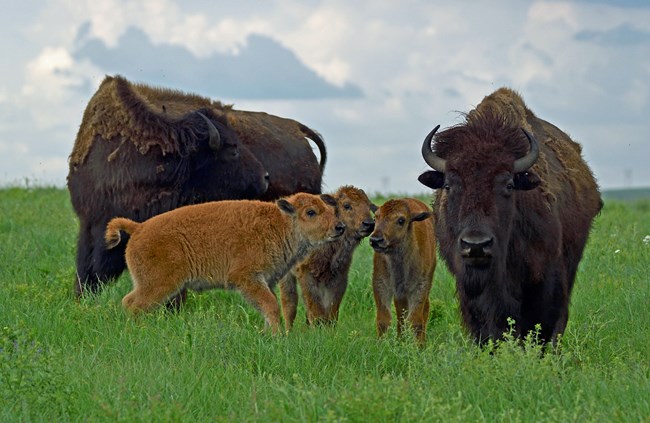
Photo by Tom Gross, 2018 Tallgrass Prairie resides in a major migration path through the central Great Plains. The Flint Hills play an important scientific and ecological role after the majority of prairie habitat was converted to farmland. Annual bird and butterfly surveys are popular among naturalist volunteers. Wildlife abounds on the tallgrass prairie from a wide variety of habitats. Over 40 different species of reptiles and amphibians are identified in the Flint Hills alone. Over 30 species of mammals call this place home. More than 200 species of birds migrate through or nest in the area. At least 35 fish species with hundreds of aquatic invertebrates are recorded in the waterways. Thousands of other invertebrates such as insects and arachnids are often forgotten among the larger fauna.
Bison Facts
|
Last updated: February 14, 2025
